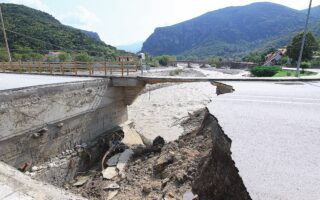Fireplaces, wood stoves as lethal as cars
The main sources of air pollution in urban centers in Greece are vehicle traffic and heating

Smoke from fireplaces and wood stoves and pollutants from vehicles are responsible for around 10,000 premature deaths a year in Greece, according to new data on the impact of air pollution on the health of Greeks included in the European Environment Agency’s annual report published Wednesday.
“In winter, the most important source is heating, especially biomass burning (fireplaces and stoves),” said Nikos Mihalopoulos, director of the National Observatory of Athens’ Institute of Environmental Research.
“This phenomenon appeared a decade ago, at the beginning of the economic crisis, and remains strong. Pollution from biomass burning has brought us back to pollution levels that existed 20-30 years ago, in some cities they are similar to those of Asian countries. I fear that this year the situation will be worse, as people have been frightened by rising gas prices and will turn to burning wood and pellets again,” he said while also stressing that biomass burning in Athens is as responsible as vehicle pollution for causing new cancers.
This problem, he notes, is not confined to the Greek capital. “In some cities in the periphery it is much worse. For example, in Ioannina it is up to three times higher. It’s not just a matter of population, it also depends on the climate of the region, the atmospheric conditions, the topography, the penetration of natural gas in a city,” he added.
Greece ranked third highest in the European list regarding the impact of nitrogen dioxide on diabetes mellitus. Overall, air pollution claimed the lives of 311,000 European citizens in 2020, remaining the main environmental threat on the continent.
According to the report, which covers 2020, around 8,800 people died prematurely in Greece due to elevated levels of microparticles – some 1,900 from elevated levels of nitrogen dioxide and 920 from ozone levels above permissible limits. The maximum values for these pollutants are 5 µg/m3 for particulate matter, 10 µg/m3 for nitrogen dioxide, and 70 µg/m3 for ozone.





